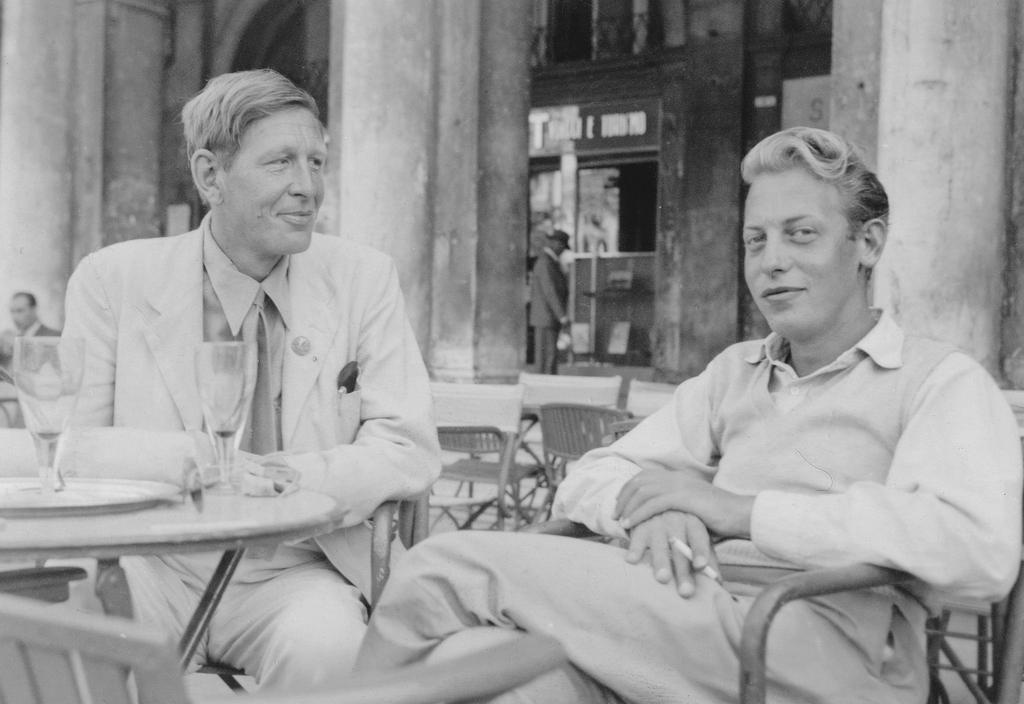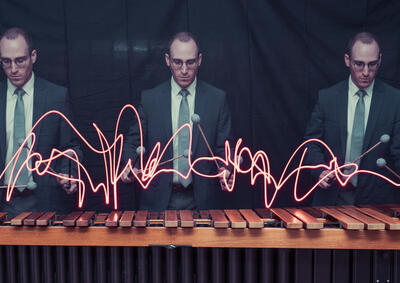Role reversals: the biographical dimensions of "The Rake’s Progress"
In writing the libretto for Stravinsky’s opera The Rake’s Progress, poets, lovers, and companions W.H. Auden and Chester Kallman were “in certain ways writing about their relationship,” says Langdon Hammer, the Niel Gray, Jr. Professor of English at Yale. The result, Hammer says, is a work that just might be Auden’s “last great love poem,” one that explores the complexities of intimacy through a campy Faustian allegory. The opera tells the story of Tom Rakewell, who leaves his betrothed, Anne Trulove, in the countryside to seek adventure in London only to get more than he bargained for upon meeting the seemingly benevolent Nick Shadow.
Hammer is the author of James Merrill: Life and Arts (Knopf, 2015), a biography of the American poet who was close with Kallman. It was Kallman, Hammer says, who was the opera lover in the household. “I believe he really led Auden into the opera.” The libretto’s playfulness, Hammer says, can be found, in part, in the way the poets approached the commission. While in real life Auden was the Anne to Kallman’s Tom, “who was certainly a rake,” each poet wrote the other’s half of the story, according to Humphrey Carpenter, the author of W.H. Auden: A Biography (Houghton Mifflin, 1982).
Danilo Gambini, stage director for Yale Opera’s production of The Rake’s Progress, says Stravinsky’s opera is about “the gambles that we make in life, and who we are associating ourselves with in order to get what we want. … It’s a myth. It’s archetypical … something that applies to everyone, that applies everywhere.” That is, the story illuminates the relationship between Auden and Kallman and the complexities that for each of us come with being human, with ambition and desire.
It's a work, Hammer says, that asks, “What’s a moral life? What’s the place of love? What costs are there to how you live? What are the limits of true love?” Despite the tragic elements of the story—Tom’s association with Nick leads to madness—it’s a piece that’s also funny. “There’s a certain amount of parody involved so that everybody knows … you’re not trying to be realistic,” Hammer says. “You are presenting a fable.”
The presentation—Stravinsky’s neoclassical score, Auden and Kallman’s libretto, and the staging—calls on the long history of opera and theatricality. “Auden was always interested in traditions of song and adapting them for lyric poetry,” Hammer says. “He was interested in popular song. He was interested in the music hall, and the folk song.” Style-wise, the libretto for The Rake’s Progress “is continuous with the rest of (Auden’s) body of work.” The biographical dimensions of the story, which points to universal themes, is one that “would’ve been very present to many in the audience” when the opera received its world and U.S. premieres in 1951 and 1953, respectively.
At the end of the opera, Hammer points out, “impulse and misplaced confidence lead Tom away from Anne, the woman he loves, and put his soul at risk.” In a card game with Shadow, the Devil incarnate, Tom bets on “love first and last.” Despite Tom’s victory, “the Devil curses him with madness,” Hammer says. “In a sense, to be in love and to put your faith in love against all odds is to be mad.”
That madness, that aspect of the human condition, is put into perspective at the end of the opera, when the bearded lady, Baba the Turk, whom Tom marries during his days of debauchery in London, breaks the fourth wall to caution us: “Let Baba warn the ladies … all men are mad, all they say or do is theater.”
Yale Opera presents The Rake's Progress on Saturday and Sunday, Feb. 17 and Feb. 18, at the Shubert Theatre. Tickets are available here.






